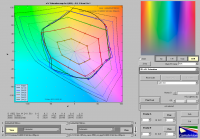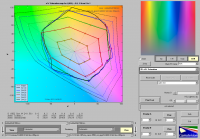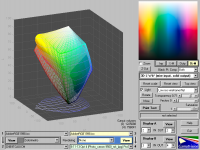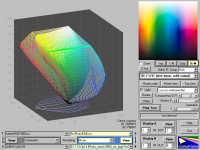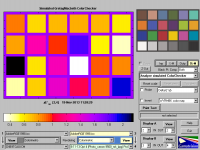- Joined
- Dec 20, 2010
- Messages
- 978
- Reaction score
- 1,007
- Points
- 233
- Location
- Ottawa, CANADA
- Printer Model
- Canon Pro-100, and Epson 3880
On the question of ColorMunki optimisations, the gamut volumes of the 5 versions of the profile according to Gamutvision are:-
Colorimetric Gamut Volumes in L*a*b* volume units (Delta E^3)
Primary profile 664573
Optimisation (1) 679383
Optimisation (2) 680726
Optimisation (3) 682676
Optimisation (4) 679992
The volume of Adobe RGB 1998.icc in the same units is 1225088.
All but the last increased the volume. The last image used was a scene of green grass and trees with many wild flowers of different colours and a grey wooden seat (see post #19 for details of other optimisation images). This reduced the volume, but a trial print of the image looked fine. So my conclusion that ColorMunki optimisations beyond the second are effective, is I think justified.
Was this increased gamut volume visible in the print, or monitor if a monitor profile?
RS

